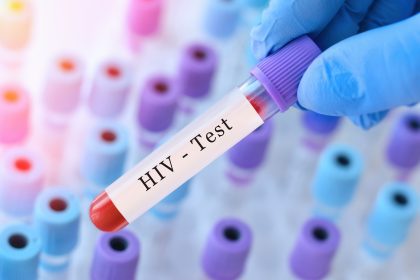A surgical procedure that drastically reduces stomach size has become the leading weight loss operation in the United States, with approximately 150,000 Americans undergoing the transformation annually. Gastric sleeve surgery, also known as sleeve gastrectomy, has emerged as a powerful tool in combating severe obesity and its related health complications, offering patients an average weight reduction of 25 to 30% of their total body weight.
The procedure works by permanently removing about 80% of the stomach, leaving behind a banana-shaped “sleeve” that restricts food intake and reduces hunger hormones. This dual-action approach helps patients feel satisfied with smaller portions while simultaneously reducing appetite signals that often sabotage weight loss efforts.
Despite its growing popularity, the surgery remains significantly underutilized. Medical experts estimate that only 1% of people who medically qualify for this potentially life-changing procedure actually receive it. This disconnect highlights ongoing barriers including insurance coverage, accessibility issues, and persistent misconceptions about bariatric surgery.
For those who do undergo the procedure, the transformation extends far beyond aesthetics. The surgery shows remarkable effectiveness in improving or resolving serious obesity-related medical conditions including diabetes, high blood pressure, and sleep apnea, making it an increasingly important tool in addressing the complex medical challenges associated with severe obesity.
Understanding the surgical approach
The gastric sleeve procedure represents a significant evolution in bariatric surgery techniques, offering substantial benefits with fewer complications compared to earlier weight loss operations. The process involves creating a much smaller stomach reservoir without rerouting the intestines, preserving normal digestive function while restricting food volume.
During the operation, surgeons remove the larger, curved portion of the stomach, leaving behind a narrow tube approximately the size and shape of a banana. This dramatically reduced stomach capacity helps patients feel full after consuming small amounts of food, creating a powerful tool for portion control and calorie reduction.
Beyond simple restriction, the surgery also removes portions of the stomach that produce ghrelin, often called the “hunger hormone.” This reduction in hunger-stimulating hormones helps decrease cravings and appetite, addressing both the mechanical and biochemical drivers of obesity in a single procedure.
Qualifying for the procedure
Medical guidelines establish strict criteria for determining appropriate candidates for gastric sleeve surgery, focusing on both physical measurements and health status. The procedure is generally reserved for individuals facing significant health risks from their weight rather than those seeking primarily cosmetic improvements.
Patients typically must have a body mass index of at least 40, or a BMI of 35 accompanied by serious obesity-related health conditions such as type 2 diabetes, hypertension, or sleep apnea. These thresholds help ensure the surgery is provided to those who stand to gain substantial health benefits from significant weight reduction.
Most insurance providers require documentation of previous weight loss attempts before approving the procedure. Patients often must complete a medically supervised weight management program lasting three to six months, demonstrating their commitment to lifestyle changes while confirming that traditional approaches have proven insufficient for achieving necessary weight reduction.
Comprehensive preparation process
The journey toward gastric sleeve surgery involves extensive preparation designed to optimize surgical outcomes and prepare patients for post-operative lifestyle changes. This preparation typically begins months before the actual procedure and involves multiple healthcare specialists.
Prior to surgery approval, patients undergo thorough psychological evaluation and counseling to assess their readiness for permanent lifestyle changes and identify potential emotional or behavioral issues that might impact long-term success. This screening helps ensure candidates possess the necessary commitment and stability to maintain lifestyle modifications after surgery.
In the weeks immediately preceding surgery, patients follow a restrictive liquid diet designed to reduce liver size and abdominal fat, creating better surgical access and visibility. This pre-operative diet typically lasts two weeks and helps reduce surgical risks while demonstrating the patient’s ability to comply with dietary restrictions.
Surgical procedure details
Most gastric sleeve operations utilize minimally invasive laparoscopic or robotic techniques, allowing surgeons to perform the procedure through several small incisions rather than a single large opening. This approach significantly reduces recovery time, post-operative pain, and wound complications compared to traditional open surgery.
The operation begins with the administration of general anesthesia, followed by the creation of several small abdominal incisions. The surgeon then inserts specialized instruments including a small camera that projects magnified images onto video monitors, providing detailed visualization of the surgical area without extensive tissue exposure.
After measuring and marking the portion of stomach to be preserved, surgeons use specialized stapling devices to divide the stomach and permanently remove approximately 80% of its original volume. The entire procedure typically requires 60 to 90 minutes, with most patients remaining hospitalized for one to two days for monitoring and pain management.
Health benefits beyond weight loss
While significant weight reduction represents the most visible outcome of gastric sleeve surgery, the procedure produces profound improvements in numerous obesity-related health conditions. These metabolic benefits often begin appearing within days of surgery, even before substantial weight loss occurs.
Dramatic improvement in type 2 diabetes represents one of the most remarkable effects, with many patients experiencing normalized blood sugar levels within days or weeks. This rapid improvement, occurring before significant weight loss, suggests hormonal mechanisms beyond simple caloric restriction contribute to the procedure’s effectiveness.
Additional health improvements typically include reduced blood pressure, improved cholesterol profiles, relief from sleep apnea, decreased joint pain, and enhanced mobility. Many patients report discontinuing multiple medications within months of surgery, representing substantial improvements in their overall health status and quality of life.
Recovery timeline and expectations
The post-operative journey following gastric sleeve surgery involves several distinct phases, beginning with an initial healing period focused on wound recovery and pain management. Most patients return home within one to two days after surgery and gradually increase their activity levels over subsequent weeks.
Dietary progression follows a structured timeline, beginning with clear liquids immediately after surgery before advancing to protein shakes, pureed foods, soft foods, and eventually solid foods over approximately eight weeks. This gradual reintroduction allows the staple line to heal while helping patients adapt to their significantly reduced stomach capacity.
Full recovery typically requires approximately one month, with most patients returning to work and normal activities within two to four weeks depending on their occupation and individual healing progress. Energy levels often fluctuate during this period as the body adjusts to reduced caloric intake while healing from surgery.
Long-term weight loss outcomes
Research indicates gastric sleeve surgery produces average weight loss of 25 to 30% of total body weight within the first one to two years after surgery. For perspective, this represents approximately 75 to 90 pounds for someone weighing 300 pounds before surgery, though individual results vary based on numerous factors.
Studies following patients for five years after surgery demonstrate that most maintain the majority of their weight loss long-term, though some regain may occur. Success rates remain significantly higher than non-surgical weight loss approaches, particularly for those with severe obesity.
Long-term outcomes depend heavily on patient adherence to recommended lifestyle changes and follow-up care. Those who maintain regular medical monitoring, consistently take nutritional supplements, follow dietary guidelines, and incorporate regular physical activity typically achieve the best sustained results.
Potential complications and considerations
Though generally considered safe, gastric sleeve surgery carries potential risks and complications that patients should understand before proceeding. Surgical complications occur in less than 1% of cases but may include bleeding, infection, adverse reactions to anesthesia, or leakage along the staple line.
Long-term complications may develop in some patients and typically include vitamin deficiencies, acid reflux, stricture formation at the staple line, or gallstone development during rapid weight loss. Most of these issues respond well to medical management when identified early through regular follow-up appointments.
Some patients experience food intolerances after surgery, particularly with dense proteins, dry foods, or heavily processed items. These sensitivities often improve with time but may require ongoing dietary adjustments to prevent discomfort after eating certain foods.
Nutritional considerations for long-term success
Maintaining adequate nutrition after gastric sleeve surgery requires lifelong attention to dietary quality and supplement regimens. The dramatically reduced stomach capacity means patients must prioritize nutrient-dense foods to meet their nutritional needs within very limited volume.
Protein intake becomes particularly crucial after surgery, with most programs recommending 60 to 80 grams daily to prevent muscle loss during rapid weight reduction. Patients typically incorporate protein supplements initially before transitioning to food sources as their diet expands.
Daily vitamin and mineral supplementation remains necessary permanently after surgery, typically including a high-quality multivitamin, calcium with vitamin D, vitamin B12, and potentially additional supplements based on individual laboratory monitoring. Regular blood tests help identify and address potential deficiencies before they cause health problems.
Alternative options when initial results falter
While most patients achieve substantial and sustainable weight loss with gastric sleeve surgery, some experience insufficient results or significant weight regain over time. For these individuals, revision options exist to address specific issues or convert to alternative bariatric procedures.
Surgeons may perform procedures to reduce stomach capacity if stretching has occurred over time. Alternatively, conversion to more complex bariatric operations such as gastric bypass or duodenal switch may provide additional metabolic benefits and restriction for those requiring more significant intervention.
The potential for revision underscores the importance of maintaining regular medical follow-up throughout life after bariatric surgery. Early identification of weight regain patterns allows for prompt intervention with dietary counseling, behavior modification, or surgical revision when appropriate.
As the most frequently performed weight loss procedure in America, gastric sleeve surgery continues transforming lives through significant weight reduction and improved health outcomes. For those struggling with severe obesity and its related conditions, this increasingly refined procedure offers a powerful tool for achieving sustainable improvements in both weight and overall health.













